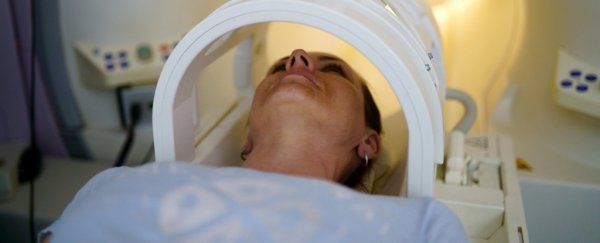The advent of routine cancer tests and screenings has saved numerous lives throughout the world, but early detection of abnormal cells isn't always a good thing.
Not all cancer cells are the same, nor do they pose equivalent risks. Oftentimes, humans can go their entire lives without ever knowing a growth is there, and they're not harmed by its presence in the body.
In benign cases like this, detection, diagnosis and treatment - including chemotherapy, radiation and surgery - has the potential to do far more harm than good.
Now, new research in Australia once again suggests our eagerness for early detection has become a problem. For the first time anywhere in the world, scientists there have calculated the risk of 'overdiagnosing' five different cancers.
This is an incredibly difficult problem to quantify, since most of the time, doctors have no idea when a patient has been overdiagnosed; even on a population level, estimates around the world vary considerably.
Compared to 1982, researchers from Bond University in Queensland found that in 2012, Australian patients were much more likely to be diagnosed with cancer, even though cancer mortality was not on the rise.
That same year, according to their estimates, nearly a quarter of cancers in men were overdiagnosed, including 42 percent of prostate cancers, 42 percent of renal cancers, 73 percent of thyroid cancers and 58 percent of melanomas.
For women, the estimated number was closer to 18 percent of all cancers, including 73 percent of thyroid cancers, 54 percent of melanomas, and 22 percent of breast cancers.
Put differently, in the space of 2012 that's up to 11,000 cancers in women and 18,000 cancers in men that were detected, but may not have needed diagnosis or treatment.
"Cancer treatments such as surgery, radiotherapy, endocrine therapy, and chemotherapy can cause physical harm, but the risks are considered acceptable if diagnosis is appropriate," the authors explain.
"When someone is unnecessarily diagnosed with cancer, however, they can only be harmed by treatment, not helped."
The cancers estimated to be most overdiagnosed were breast cancer and prostate cancer. These are relatively common cancers, and in recent years, several countries around the world have adopted extensive national screening programs for them, even when no symptoms are observed.
In fact, when mammograms were first introduced in the 1980s, the United States saw a 50 percent increase in breast cancer. A few years later, when a similar screen for the prostate arrived on the scene, the incidence for this cancer doubled.
"The problem is that some screening identifies abnormal cells that look like cancer but don't behave like cancer," says physician Paul Glasziou from Bond University.
"However, reducing that problem is not easy, as some types of screening are important."
Getting the balance right between too little and too much cancer testing is crucial for public health, but similar to Australia, the widespread use of extensive screening programs appears to have also tipped the scales in other countries.
In Denmark, a study found mammography screenings did not reduce the number of late stage tumours and very often detected small tumours that may not pose a risk.
In the United Kingdom, research has shown that for each woman whose life is saved through breast cancer screening, around three will be diagnosed with a breast cancer that would never have been a problem.
Last year, a study on 40 years of data in the United States found thyroid cancer, kidney cancer, and melanoma rates are rising steeply, while deaths from cancer have remained largely unchanged.
"Many people have assumed that additional screening is the best thing for population health, but in fact it may not be. You don't test a population to health," said the investigator Gilbert Welch from Brigham Women's Hospital at the time.
Writing for STAT news, Welch blames the problem of overdiagnosis on "our irrational exuberance for early detection". He explains that if cancer is detected earlier on in a person's life, they are going to appear to live longer because we are starting the timer so much earlier. But, in the end, their time of death may remain completely unchanged.
This debate, however, is far from over, and while some have suggested we stop or slow down certain screenings, few nations have been convinced to change their practices.
More data on this issue will help clear up some of the issues around the scale of overdiagnosis and the mortality benefits of screening.
The study was published in the Medical Journal of Australia.
